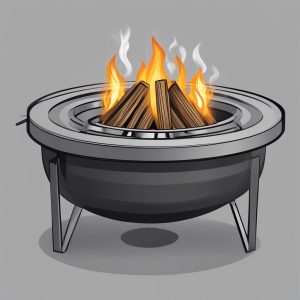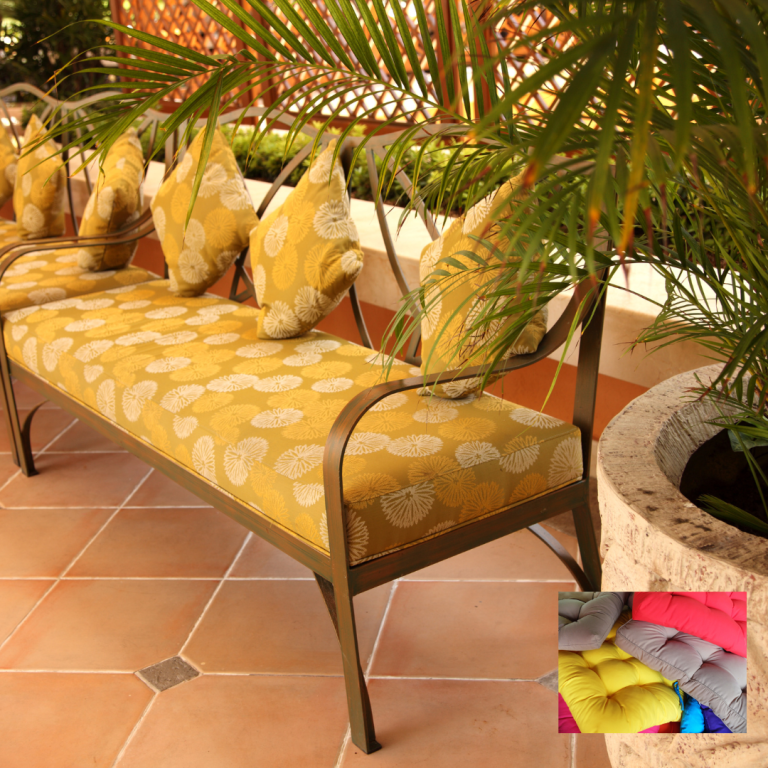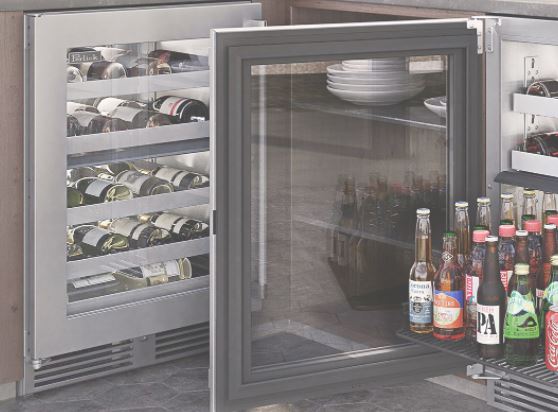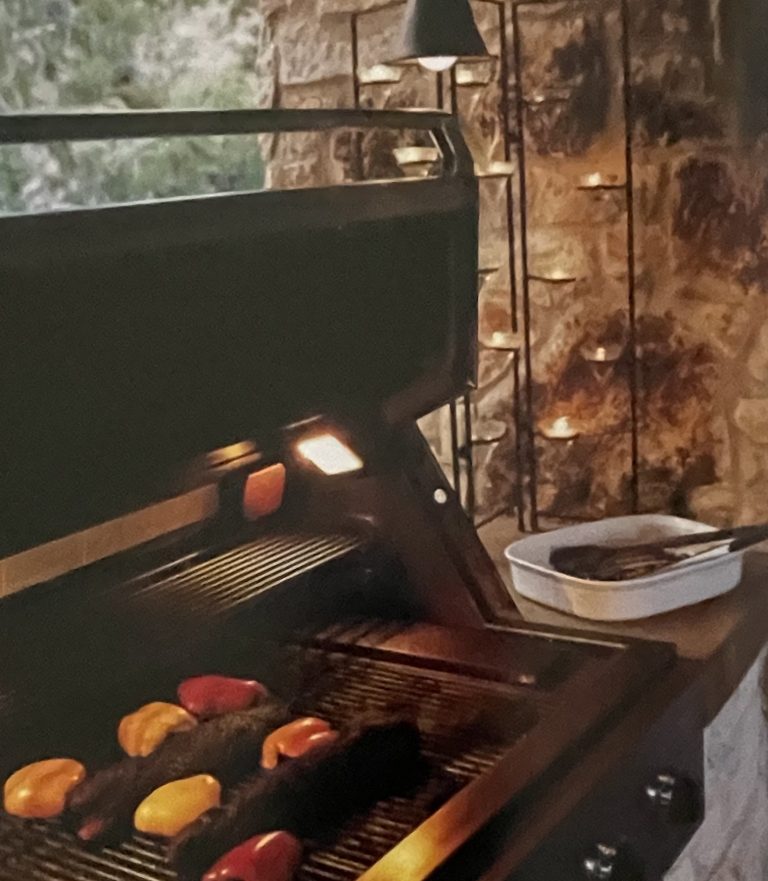How Do Smokeless Firepits Work
How Smokeless Firepits Work

If you love the warmth and ambiance of a fire pit but hate the smoke that comes with it, a smokeless fire pit might be just what you need. But how do smokeless fire pits work?
In short, these innovative fire pits use advanced technology and design to reduce or eliminate the amount of smoke produced during combustion.
Most smokeless fire pits use double-wall construction to achieve their smoke-reducing capabilities. As the fire burns, the walls become very hot, which creates a convection effect that draws air through the vents at the bottom of the fire pit.
This helps to burn off the smoke and other particles before they can escape into the air. Some smokeless fire pits also use secondary combustion, which essentially burns off any remaining smoke particles before they can escape into the air.
There are many different types of smokeless fire pits available, each with its own unique design and functionality. Some are fueled by wood, while others use propane or natural gas. Some are portable and lightweight, while others are heavy-duty and built to last.
Design and Functionality
Smokeless fire pits are designed to burn wood or charcoal more efficiently, producing less smoke and leaving behind less ash. They are equipped with a unique airflow system that allows for a more complete combustion process, resulting in a cleaner and hotter fire.
Unique Airflow System
The design of a smokeless fire pit typically includes a double wall with an inner and outer layer. The inner wall is perforated with vent holes that allow air to flow into the fire pit, while the outer wall is solid.
The vent holes in the inner wall are strategically placed to create a unique airflow system that promotes complete combustion of the fuel.
As the fire burns, the air is drawn into the fire pit through the vent holes in the inner wall. This preheated air then mixes with the smoke and gases produced by the burning fuel, causing them to ignite and burn more efficiently.
The hot air and gases are then drawn out of the fire pit through the vent holes in the outer wall, creating a continuous flow of air that keeps the fire burning hot and clean.
Secondary Combustion Process
Smokeless fire pits also utilize a secondary combustion process to further reduce smoke and increase efficiency. As the fuel burns, it releases gases and other byproducts that are not fully combusted.
In a traditional fire pit, these byproducts would escape into the air as smoke. However, in a smokeless fire pit, the unique airflow system and double wall design allow these byproducts to be drawn back into the fire pit and ignited in a secondary combustion process.
This process helps to reduce smoke and produce a cleaner, hotter fire.
Types of Smokeless Fire Pits
Smokeless fire pits come in different models, each with its unique features. Here are some of the common types of smokeless fire pits that you can choose from:
Wood-Burning Models
Wood-burning fire pits are the most common type of smokeless fire pits. They use a unique airflow system that increases the combustion of wood, reducing smoke production.
These models are ideal for those who prefer the traditional wood-burning experience but want to avoid the smoke and ash produced by conventional fire pits.
When choosing a wood-burning fire pit, consider the fuel type and options. Hardwoods such as maple, oak, and ash are the best fuel for smokeless fire pits. Avoid woods that are wet or highly resinous, such as pine, and treated wood, including pallets, as these can release toxic fumes.
Propane and Natural Gas Models
Propane and natural gas smokeless fire pits are ideal for those who want a clean-burning and low-maintenance fire pit. These models use gas as fuel, which burns cleanly, producing no smoke or ash. They are easy to use, and you can control the flame height with a knob or switch.
When choosing a propane or natural gas smokeless fire pit, consider the safety features. Ensure that your model has an automatic shut-off valve that cuts off the gas supply in case of a leak or malfunction.
Portable versus Stationary Models
Smokeless fire pits come in both portable and stationary models. Portable models are ideal for those who want to move their fire pit from one place to another.
They are lightweight and easy to transport, making them ideal for camping, tailgating, or backyard parties. On the other hand, stationary models are ideal for those who want a permanent fire pit in their backyard.
These models are heavy and require professional installation. They are also more expensive than portable models.
Benefits and Advantages
Smokeless fire pits offer several benefits and advantages over traditional fire pits. In this section, we will discuss some of the most significant benefits of using a smokeless fire pit.
Reduced Smoke and Odor
One of the most significant advantages of using a smokeless fire pit is that it produces minimal smoke and odor. Unlike traditional fire pits, which can produce a lot of smoke and unpleasant odors, smokeless fire pits use advanced technology to burn fuel more efficiently, resulting in a cleaner, more efficient burn.
This means that you can enjoy a warm and cozy fire without having to worry about smoke or odors.
Environmental Impact
Smokeless fire pits are also more environmentally friendly than traditional fire pits. By burning fuel more efficiently, smokeless fire pits produce fewer emissions, which means that they have a lower impact on the environment.
Additionally, many smokeless fire pits are designed to use renewable and sustainable fuel sources, such as wood pellets or bio-ethanol, which further reduces their environmental impact.
Safety and Maintenance
Smokeless fire pits are also safer and easier to maintain than traditional fire pits. Because they produce little smoke, they are less likely to cause respiratory problems or aggravate existing conditions.
Additionally, many smokeless fire pits come with safety features, such as spark screens or automatic shut-off switches, which make them safer to use. Finally, because they produce less ash and soot, smokeless fire pits are easier to clean and maintain than traditional fire pits.
Choosing the Right Smokeless Fire Pit
When choosing the right smokeless fire pit, there are several factors to consider. From size and material to price and additional features, you want to ensure that you’re making the right choice for your needs. Here are a few things to keep in mind as you shop for a smokeless fire pit.
Considerations for Size and Material
The size and material of your smokeless fire pit are two of the most important factors to consider. You want to choose a size that is appropriate for your outdoor space and the number of people you will be entertaining.
Additionally, you want to choose a material that is durable and long-lasting. Stainless steel construction is a popular choice for smokeless fire pits due to its durability and resistance to rust and corrosion.
Price and Budget Factors
Another important consideration when choosing a smokeless fire pit is your budget. Smokeless fire pits can range in price from under $100 to over $1,000, depending on the size, material, and additional features.
You want to choose a smokeless fire pit that fits within your budget while still meeting your needs.
Additional Features and Accessories
When shopping for a smokeless fire pit, consider any additional features or accessories that you may want. For example, some smokeless fire pits come with cooking accessories such as grills or rotisseries, while others may come with fire pit accessories such as spark screens or covers.
Additionally, you may want to consider the aesthetics of the fire pit and how it will fit into your overall outdoor decor.
Frequently Asked Questions
What is the principle behind the operation of smokeless fire pits?
Smokeless fire pits operate on the principle of secondary combustion. The air intake holes at the bottom of the fire pit allow oxygen to enter and mix with the hot gases produced by the burning wood.
This mixture of hot gases and oxygen then rises through the double-walled design, where it ignites and burns any remaining particulate matter, resulting in a clean, smokeless burn.
Can you use any type of wood in a smokeless fire pit?
While you can use any type of wood in a smokeless fire pit, it is important to use dry, seasoned wood to ensure a clean burn. Wet or green wood produces more smoke and can clog the air intake holes, reducing the efficiency of the fire pit.
Hardwoods like oak, maple, and hickory are good choices for a smokeless fire pit as they burn hotter and produce less smoke.
What are the environmental benefits of using a smokeless fire pit?
Smokeless fire pits are an eco-friendly alternative to traditional fire pits as they produce less smoke and particulate matter. This means that there is less air pollution and fewer harmful emissions released into the environment.
Additionally, smokeless fire pits use less wood, making them a more sustainable and cost-effective choice.
How do you properly use and maintain a smokeless fire pit?
To properly use and maintain a smokeless fire pit, it is important to follow the manufacturer’s instructions. Always use dry, seasoned wood and avoid overloading the fire pit.
Regularly clean the air intake holes and ash pan to ensure proper airflow and prevent clogs. Store the fire pit in a dry, covered area when not in use to protect it from the elements.
What design features contribute to the smokeless quality of these fire pits?
The double-walled design of smokeless fire pits is what contributes to their smokeless quality. The outer wall allows cool air to enter and circulate around the fire pit, while the inner wall contains the fire and directs the hot gases and smoke up through the air intake holes.
The air intake holes are strategically placed to allow for maximum airflow and mixing of oxygen with the hot gases.
Do smokeless fire pits provide the same level of warmth as traditional fire pits?
Smokeless fire pits provide the same level of warmth as traditional fire pits. They burn the same types of wood and produce the same amount of heat. However, smokeless fire pits burn more efficiently. This means they may require less wood to produce the same amount of heat. As a result, they are a more cost-effective choice in the long run.





